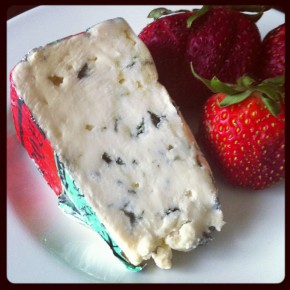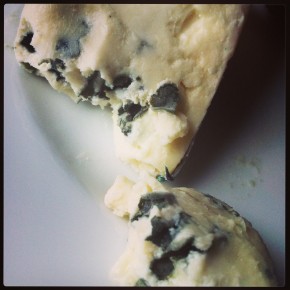Legend has it that there was a shepherd boy who once lived in Southern France who was having a delightful snack consisting of creamy sheep’s milk cheese and bread. He was eating it in a cave because maybe it was raining outside or perhaps he had anxiety issues. Either way, the cave is key to the story. So, one day, he saw a beautiful girl and so smitten was he that he left his meal right there in the cave. He came back to the cave a few months later after a few dates where he realized he and the girl had nothing in common. (He wanted a doting wife to pop out babies, and she wanted to go to college and become a lawyer and would have nothing of that arrangement unless it was a relationship based on mutual respect where family planning happened on a timeline that she felt was best for her and her spouse.)
He found his forgotten cheese and, lo’ and behold, the cheese was now riddled with some strange blue-green mold. Still, stricken with heartbreak he decided to end it all by eating this seemingly now poisonous cheese (why else would you initially eat moldy, months-old cheese?). Rather than the sweet embrace of death he discovered that the cheese was not only not-poisonous, but something delicious and very much worth living for.
So was born Roquefort cheese.
The likelihood of this exact story being true is unlikely, but like all stories there is some truth in it. The mold used for Roquefort cheese, Penicillium roqueforti, grows naturally in the soil of local caves found in Southern France. Ancient cheesemakers would place loaves of bread on the ground and allow the mold to consume them. The bread would then be partially dried and ground into a powder. This powder was then added to the cheese curd before being aged in these same caves.
These days the mold is grown in a laboratory and added to the curd or added via an aerosol method once the cheese has been pierced to allow air flow.

